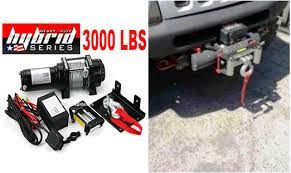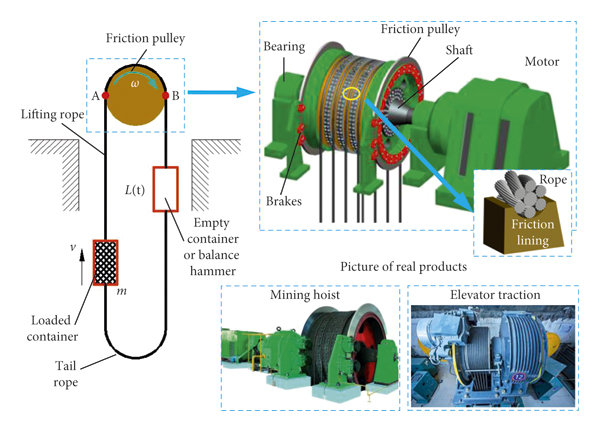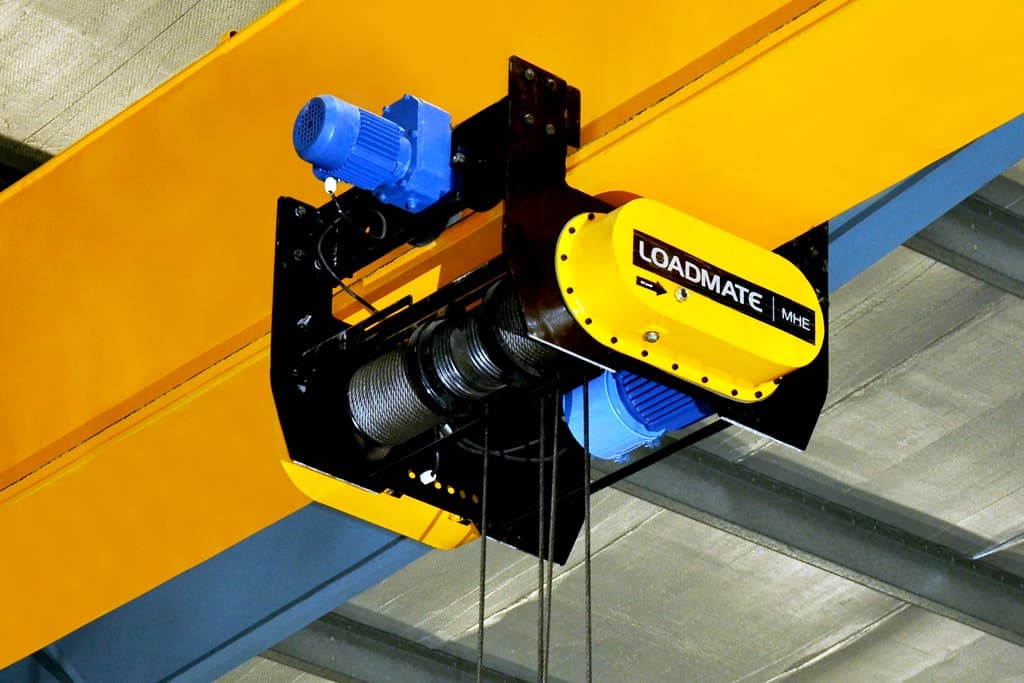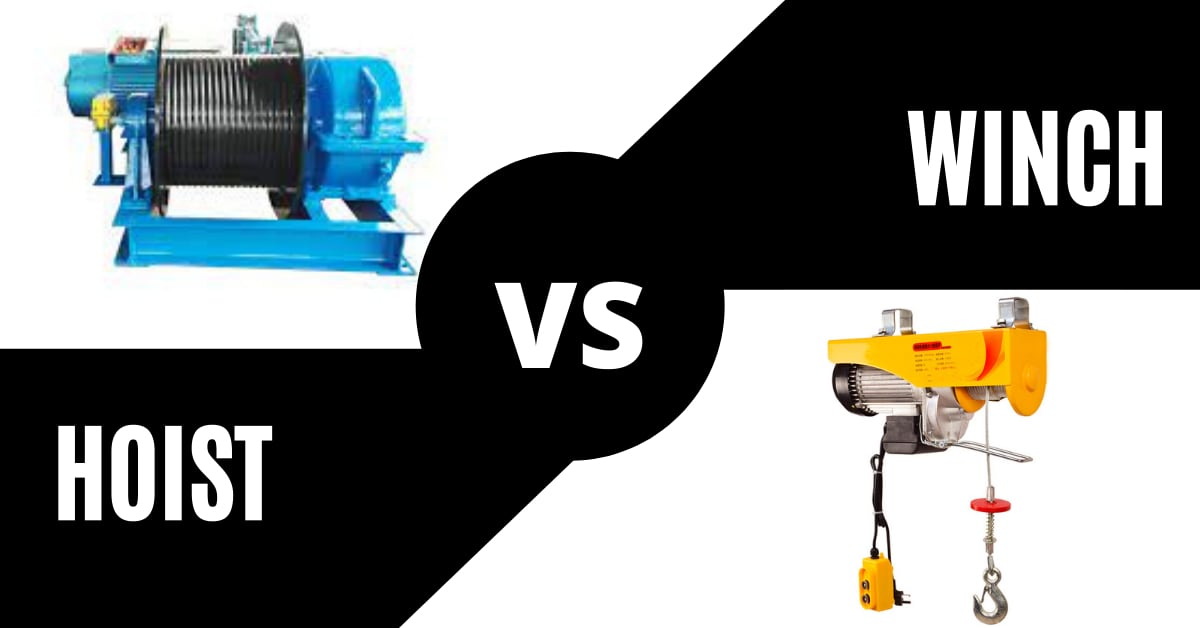The difference between a winch and a hoist is that one can lift, and the other can drag.
A winch is a great tool when you want to drag a heavy load where hoists come in handy.
when you want to lift a heavy object.
By looking at a hoist and a winch, you can say that they are the same, and most probably.
you may not be able to differentiate between a winch and a Hoist.
But on a serious note, they are not the same, their working model is different, and they are made to accomplish different tasks.
Winch and Hoist should be used according to their work because they are meant to work on different tasks.
If you use a hoist to drag and a winch to lift, you may end up falling apart the object or the tool.
All doctors have the same attributes, but you cannot ask a heart specialist to perform surgery for a brain tumor.
It’s the same in this case; they have the same working format but are not made for each other’s work.
What Makes Winch And Hoist Different From Each Other?
The winch to Pull and Hoist to lift, but they are the same when you see them.
They both have to pull and roll the wire to lift and drag, so why can’t we use a winch for lifting the object or a hoist for dragging the object.
Well, because the winch is used to drag heavy lift, it has dynamic breaks, which can help you drag a heavy object on a pathetic slope.
If you use a hoist that does not have such brakes, instead, they have mechanical brakes with which you will end up slipping out the weight.
And the winding motor will fall apart because it may not be able to hold it or drag it, and the opposing force will wreck the Hoist apart.
Hoists and winches also differ from each other regarding the capacity to lift or drag.
Hoists are profound to be useful in lifting heavyweight and have different capacity levels.
Winches have a high power of dragging and are capable of dragging much weight compared to hoists.
This is another significant difference between a winch and a hoist.
Winch And It’s Working System
As pre-described, winches are used for dragging and pulling a certain weight or object.
They have huge applications in multiple areas of construction and commercial usage.
Winches’ working system is simple and efficient, and their model works on simple physics ( for sure, I am not explaining any formulas).
The winches wind a cable or wire/rope in or out, and as the result of this action, the tension in the wire helps to drag or pull a certain weight and object.

Winch drums can be powered manually to roll in and out the cable, but they are power optional.
You can buy one with hydraulic, electric, or water power using a drum to drag the object.
I was in pain for a few days when I used it to pull a machine out of the store on my own.
I wish I could have a powered drum tool, so don’t get in trouble like me, be wise and rent or buy one which has a powered drum.
(Small Tip: You can use your younger brother to roll the wire of a winch if you want to punish him for telling your secrets).
Winches are great when you want to drag an object under 45 degrees on an angle scale.
Above this angle, Hoist is the perfect tool for such purposes (Or Again Your Brother).
Types Of Winches
Several Types Of Winches are used in both home and commercial loading work.
So look at these heavy draggers and know the type of operation they can handle by using multiple types of forces.
1. Manual Winches
Winches That can work manually with manpower.
Not recommended for Heavier Winch Cable Weights than 10 kg.
2. Motor Winches
This type of winch uses two types of built-in motor.
Magnetic motors or series wound motors to wind the cable and drag the heavy load.
3. Electrical Winches
Electrical winches work on electrical power from batteries.
Directly from the vehicle battery, or you can have a separate battery for this purpose.
4. Mechanical Winches
Mechanical winches work on the mechanical force of cars or any other vehicle you have attached.
These winches are also of several types you can use for several different types.
5. Hydraulic Winches
This type of winch is attached to a vehicle engine through a hydraulic pump powering the hydraulic motor.
This action provides plenty of tension and force to wind the rope or wire cable.
6. Hybrid Winch

The winches which are made from spare parts are hybrid.
A person may use different parts from several machines and convert them to a working winch.
Due to the use and ability of several varieties of machines and motors.
They are highly powerful and good enough to drag heavyweight.
Hoist And Its Working System
Ready to lift the things with an extra arm.
Hoists are the perfect 3rd arm to lift heavier than a normal person.
You can lift auto body parts that are heavy to move and lift, or you can use Hoist in different construction and household applications.
Hoists are dead lifters and have a huge capacity to lift the weight above 45 degrees on an angle scale.
Hoists use chains or ropes to lift the weight by means of manpower or mechanical motor power.
Powered hoists are mostly used hoists when it comes to commercial usage.
Manual hoists are also useful for certain weight lifts but not heavy deadlifts.

Hoists are best rated for their usage, loading, and duration of time in multiple applications.
Hoist’s duty comes in various ranges as H2, which is best for lightweight and short-term working usage.
H4 range is for heavy industrial lifting and commercial usage where it is needed for a longer period of time.
Hoists can be a headache to handle if you use them for lifting more than they can handle and for long shifts of more than 15 hours without giving any break.
So before using it in the work field, be sure to check its ability to lift and duty cycle time.
Types Of Hoist
Same as winches, hoists are also available in a variety of types.
They are differentiated based on two main factors: lifting medium.
The other is the power source it uses to lift the object, which a normal person cannot.
1. Chain Hoist

Chain hoist itself is quite a variety of working Hoist systems that use chains as its lifting medium.
As power means, you can manually power it up for lifting, or you can power this up electrical or pneumatically.
They are better serving, low maintenance, and quite low in cost, making them a perfect fit for many handymen.
2. Wire Rope Hoist

Rope hoists are typically preferred for lifting 10 tons or more weight.
They work quite smoothly and efficiently as compared to chain Hoists.
They use wire rope as a lifting medium and can be powered by the same means as chain hoists.
Wire rope hoists have different classifications as class D, E, and F Cranes.
3. Manual Hoist
Manual hoists are perfect for different applications, and chains or ropes can be used as a lifting medium in this Hoist.
They are classical in usage, maintenance-free, easy to inspect, and quite workable in various situations.
4. Electrical Hoist

This is another type of host that can use both rope and chain as its lifting medium but use electricity as powering medium.
It uses electrical power to shift hoists gears which help to lift the heavy load.
Frequently Asked Question
Can you use a winch as a hoist?
No, you cannot use a winch as a hoist. it will not be safe to do so, and you may be hit by a miserable wrecking situation.
But in certain cases, your winch is overlapping and can be used as Hoist also.
What is a builder hoist?
The Hoist, which builders use to lift concrete and other obsolete heavy machinery, is named builder’s Hoist.
Can a Winch and Hoist hold a load?
Yes, because they both have different braking systems.
Dynamic brakes in winch and mechanical brakes in Hoist to perform loading action.
Final Thoughts
The main difference between a winch and a hoist is one has lifting power vertically.
And one has dragging or pulling power horizontally.
Both have their specific application, and it is recommended not to use both for each other’s functions.
The results can be awful if you use them for alternate meanings.
They have plenty of applications, but both have different work areas, so use them accordingly and separately.
Video Guide
Also Read
- One-Way Motorcycle Adventure to Anchorage In 2023
- Painting ATV plastic with Krylon fusion? – Complete Guidances In 2023!
- What Happens If You Get Caught Riding An ATV On The Road? – Explore The Consequences!
- Suitable ATV for a Really Big Guy – Must Consider This Information
- ATV Accelerating Without Giving It Gas – Facts One Must Know In 2023!
